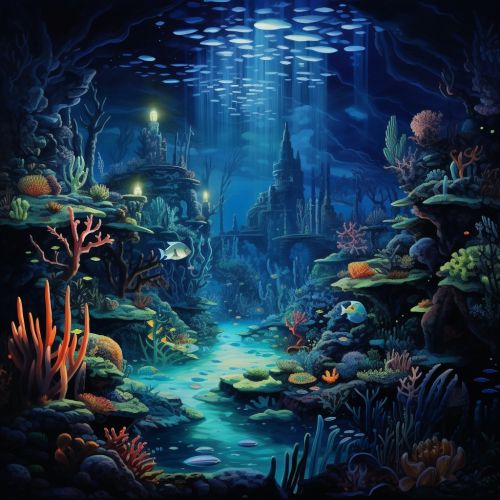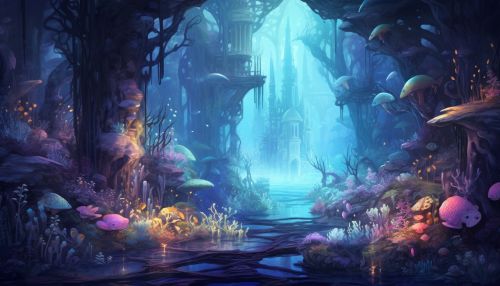The Science of Earths Deep Sea Ecosystems and Biodiversity
Introduction
The deep sea is the lowest layer in the ocean, existing below the thermocline and above the seabed. It is a realm of extreme conditions, with high pressures, low temperatures, and complete darkness. Despite these harsh conditions, a diverse array of organisms have adapted to survive and thrive in this environment. This article will delve into the science of Earth's deep-sea ecosystems and biodiversity, exploring the unique organisms that inhabit these depths and the ecological processes that sustain them.


Deep-Sea Ecosystems
Deep-sea ecosystems are characterized by their extreme physical and chemical conditions. The pressure in the deep sea can reach over 1,000 times the atmospheric pressure at sea level, and temperatures can drop to near freezing. Despite these conditions, deep-sea ecosystems are home to a variety of organisms, including fish, crustaceans, mollusks, and cnidarians. These organisms have evolved a range of adaptations to survive in the deep sea, such as bioluminescence, pressure-resistant enzymes, and slow metabolic rates.
Hydrothermal Vents
Hydrothermal vents are one of the most unique ecosystems in the deep sea. These vents are formed when seawater seeps into the ocean floor near volcanic activity, becoming superheated and mineral-rich before being expelled back into the ocean. The vents support a diverse array of organisms, including tubeworms, shrimp, and giant clams, which rely on chemosynthetic bacteria for nutrition.
Cold Seeps
Cold seeps are another type of deep-sea ecosystem, characterized by the seepage of hydrocarbon-rich fluid from the seafloor. Like hydrothermal vents, cold seeps support a unique community of organisms that rely on chemosynthesis. These include clams, mussels, and tube worms, which host symbiotic bacteria in their tissues that convert the seeping chemicals into energy.
Abyssal Plains
The abyssal plains are the vast, flat areas of the seafloor that exist at depths of 3,000 to 6,000 meters. Despite their apparent barrenness, abyssal plains are home to a variety of organisms, including sea cucumbers, squat lobsters, and polychaetes. These organisms feed on the marine snow that falls from the upper layers of the ocean, consisting of dead organisms, fecal matter, and other organic debris.
Deep-Sea Biodiversity
Despite the harsh conditions of the deep sea, it is a hotspot of biodiversity. This is due to the variety of habitats and ecological niches available, from hydrothermal vents and cold seeps to abyssal plains and seamounts. The deep sea is home to a vast array of organisms, many of which are still being discovered and described by scientists.
Fish
Deep-sea fish are some of the most iconic organisms of the deep sea. Species like the anglerfish, with its bioluminescent lure, and the viperfish, with its large teeth and hinged jaw, are well-known for their adaptations to the deep-sea environment. Other deep-sea fish include the gulper eel, with its large mouth and distensible stomach, and the dragonfish, which produces red bioluminescence, a color that is rare in the deep sea and thus provides a stealthy form of illumination.
Invertebrates
Invertebrates make up the majority of deep-sea biodiversity. These include crustaceans like the giant isopod and the yeti crab, mollusks like the vampire squid and the dumbo octopus, and cnidarians like the deep-sea jellyfish and the sea pen. Many of these invertebrates have evolved unique adaptations to the deep-sea environment, such as bioluminescence, pressure-resistant shells, and the ability to withstand long periods without food.
Microorganisms
Microorganisms are the foundation of deep-sea ecosystems, providing the base of the food web and driving the biogeochemical cycles that sustain life in the deep sea. These include bacteria, archaea, and single-celled eukaryotes, many of which are chemosynthetic, deriving energy from the oxidation of inorganic compounds. These microorganisms are crucial for the functioning of deep-sea ecosystems, particularly at hydrothermal vents and cold seeps, where they form the basis of the food web.
Conservation and Threats
Despite its remoteness, the deep sea is not immune to human impacts. Overfishing, pollution, and climate change are all threats to deep-sea ecosystems and biodiversity. Deep-sea fishing, particularly for species like orange roughy and Patagonian toothfish, can deplete fish populations and damage seafloor habitats. Pollution, including plastic waste and heavy metals, can accumulate in the deep sea, impacting organisms and ecosystems. Climate change can also affect the deep sea, altering temperature, pH, and oxygen levels, and potentially disrupting deep-sea ecosystems.
Conservation of the deep sea is crucial for maintaining global biodiversity and ecosystem function. This includes the establishment of marine protected areas, the regulation of deep-sea fishing and mining, and the reduction of pollution. Research and monitoring are also essential for understanding deep-sea ecosystems and biodiversity, and for informing conservation and management strategies.
